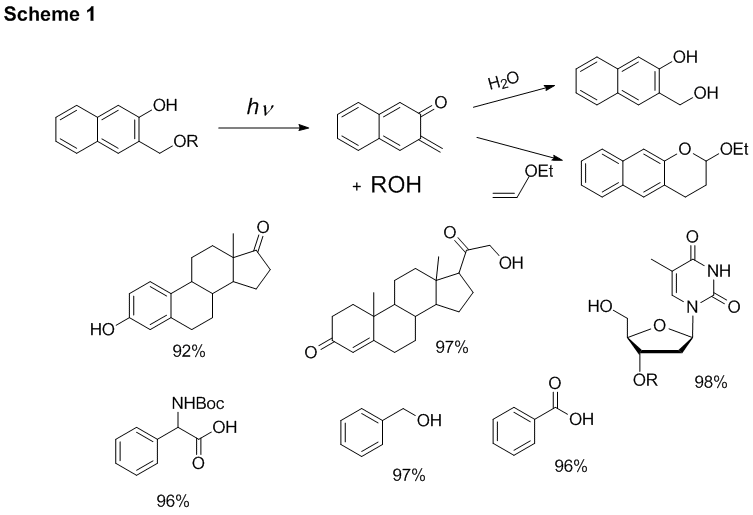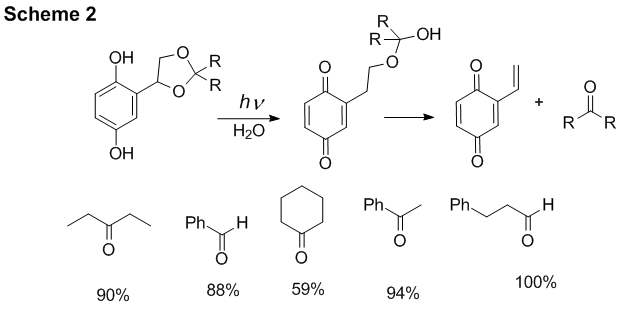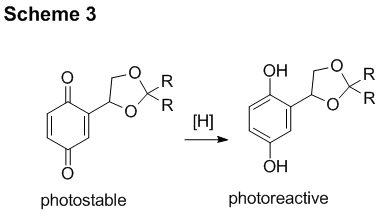Reports: AC4
48353-AC4 Light-Induced Ketonization - Elimination Reaction of Enol Forms of Gamma- and Delta- Hydroxy Ketones
The goal of this proposal is to investigate the mechanism and scope of the photochemical ketonization elimination reaction of stable enol tautomers of g- alkoxy (aryloxy, carbalkoxy, etc.) - substituted carbonyl compounds. We are exploring feasibility of the design of novel photolabile protecting groups, as well as photochromic systems, based on this reaction. Light-induced dehydration of o-hydroxybenzyl alcohol derivatives represents a known example of such ketonization elimination reaction. This new PPG platform is being tested for the photolabile protection of glycols, carbohydrates, and carbonyl compounds. We also study the kinetics of substrate release.
Results obtained during first year of funding.
3-Hydroxy-2-naphthalenemethanol protecting group. We have shown that various alcohols and carboxylic acids can be protected with 3-hydroxy-2-naphthalenemethanol protecting group. The irradiation of such caged substrates results in an efficient release of the payload. The by-product of this reaction, o-naphthoquinone methide is hydrated to 3-hydroxy-2-naphthalenemethanol or can be trapped by ethyl vinyl ether (Scheme 1, yields of the photo-release reactions are shown under the substrates). We have also studied the rate of the release and have found out that substrates are released with time constant of 12 μs.
(2,5-Dihydroxyphenyl)ethylene glycol protecting group. We have previously shown that 2,5-dihydroxybenzyl protecting works well for caging of alcohols. Based on these results we have developed (2,5-dihydroxyphenyl)ethylene glycol protecting group for the photolabile protection of alcohols (Scheme 2).
The additional advantage of this photolabile protecting group is the safety-catch option. An oxidized from of (2,5-dihydroxyphenyl)ethylene glycol acetals, the corresponding p-quinone, is photochemically stable but can be converted in to a photoreactive state by mild reducing agents (Scheme 3).
Protection of 1,2- and 1,3-glycols with salicylaldehyde derivatives. We have also developed the protecting group for 1,2- and 1,3-glycols, which is based on o-hydroxybenzyl alcohol reactivity. Thus, glycols readily react with 5-methoxysalicylaldehyde in the presence of dehydrating agents and catalytic amounts of p-toluenesulfonic acid to produce corresponding acetals (Scheme 4). 300 or 350 nm irradiation results in the efficient (F300 nm ~ 0.3) release of the substrate (Scheme 4).
This methodology has been employed in the development of a safety-catch photlabile benzylidene protecting group for carbohydrates (Scheme 5).









